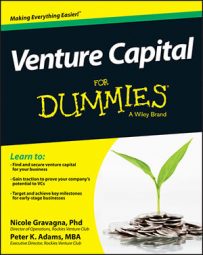A business plan is a document that describes the details of any business, and it has its place in securing capital for your business. This document includes plans for the business over the course of many years. Generally, the document can be 10 pages or 50 pages or more and includes product plans, revenue plans, income and spending pro formas, team needs over time, marketing plans, promotional plans, and strategic relationship details.
There is no standard length to the plan because every company is different. Venture capitalists see good plans that are just a few pages long and others that require one hundred or more pages. Regardless of the length, you should address all the items listed previously within your plan.
As a living document that you update regularly, the business plan will change greatly from one version to the next. Because nothing in the business plan is set in stone (unforeseen issues will undoubtedly prevent some plans from coming to fruition), it’s a great tool to help the company plan many years in advance.
Some people claim that, because things change so quickly in a venture company, there’s no need to have a plan. Investors couldn’t disagree more. There’s an old saying that “a failure to plan is planning to fail.”
Know who the business plan is for
The business plan used to be the way companies communicated with potential investors. A company would submit a full business plan to investors for review. The investors would then choose which companies to interview, based on the information in the many business plans that they were reading.
With time, customs change. Now, pitch decks, or presentations typically in PowerPoint or PDF format, are used instead of business plans for communicating with investors, and business plans have a different purpose.
Business plans are now internal documents. They’re roadmaps for company management to follow or change as new information becomes available. When things are changing rapidly, your plan is what keeps everyone pointed in the same direction. When the time comes to pivot, the plan ensures that everyone is on the same page and knows what you’re pivoting from and where you are now heading.
Create the plan: A primer
Many of the details in the business plan will be the result of thought experiments, the process of imagining a future scenario and playing it out (on paper) to its logical end. For example, you may think through what your company would look like if it sold directly to customers over the Internet, or if it entered into a distribution partnership.
Each strategy poses unique challenges and costs, and a thought experiment lets you flesh these out in order to understand the best outcome for the company. The result of this analysis is what ends up in your plan. The exercise of thinking out (and writing out) all the details is invaluable.
Some people are starting to use software technology to create dynamic and visual business plans. Instead of a static paper document consisting of white pages, words, and a few graphs and charts, new business plans are more like web pages where a front page links to multiple pages, each of which dives deeper into each main aspect of the business.
No matter the format that you choose for your business plan, make sure that everyone on the team and the board has access to the most updated version of the plan for reference and updates.

